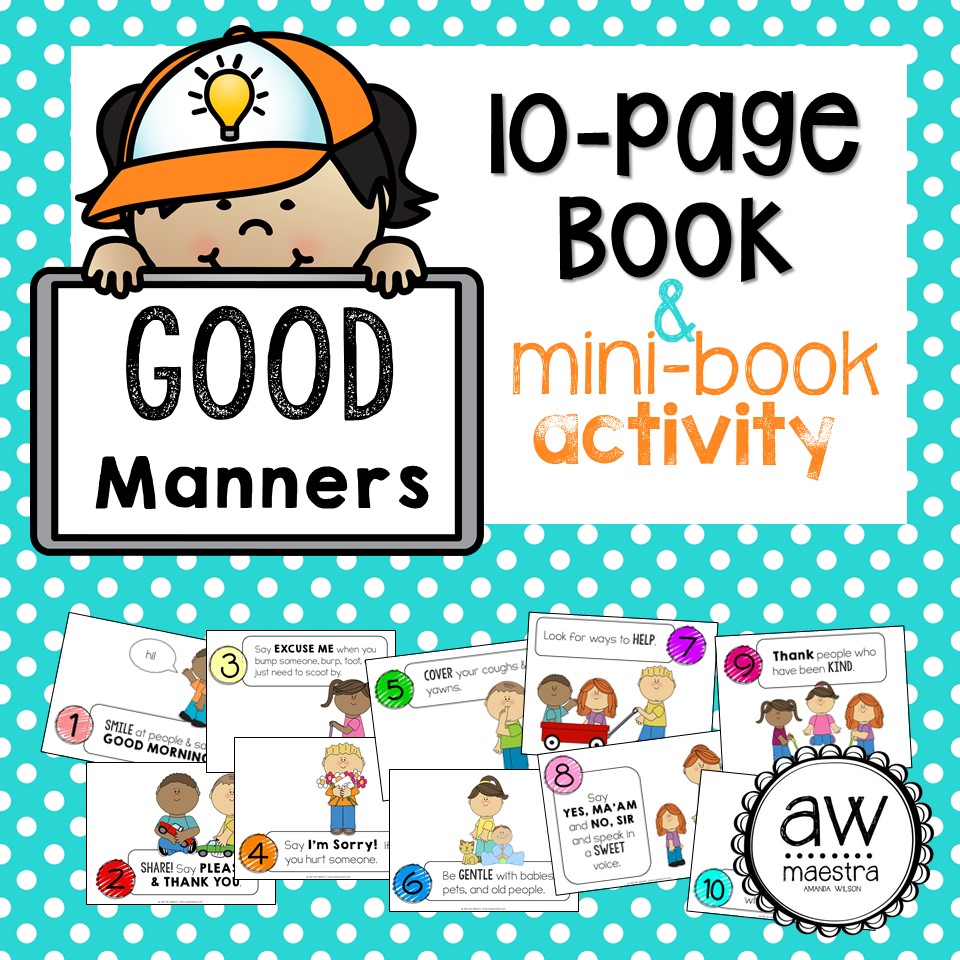Teaching good manners begins long before your little one knows how to walk or talk. As the parent, you model in daily life the respect and kindness that you one day want to be mirrored back to you in your child. All throughout their childhood, it is the unique job of parents to teach children good manners.
But, what good manners should you work to instill in your child?
These 10 classic good manners are basic social skills that every child should learn and master before leaving childhood. We even have a downloadable printable for easy teaching.
How to Teach Good Manners?
Several years ago, I came across this classic book, “How to Behave and Why” by Munro Leaf. I read it with my 1st grader and fell in love. In simple words and basic cartoon pics, it outlined the basic good manners that every child should know.
Leaf’s book is wonderful, but it is also long. In fact, it was so jam-packed with great wisdom that we didn’t try to read it in one sitting but stretched it out over several days. It was so lengthy, in fact, that I was afraid my little one wouldn’t remember the beginning concepts by the time we got to the end. And these were ideas I definitely wanted her to remember and master!
So, inspired by the concepts in Leaf’s book, I created a mini-book as a reminder of 10 classic good manners every child should master in childhood. You can grab your copy of the downloadable printable here. It includes poster-size pages, mini 4-to-a-page format, and black-and-white coloring sheets.
Now, on to mastering them!
What are 10 Good Manners?

1. Smile at people and say good morning.
It’s important to greet people when you first see them. Everyone longs to be seen, noticed, and appreciated. It only takes a second. So, look someone in the eye, give a friendly smile, and say hello. It’s the beginning of something great.

2. Share! Say please & thank you.
Sharing may well be the most basic – and most difficult – manner of toddlerhood! Learning to take turns, share, and communicate verbally with a please and thank you are classic good manners every child must be taught.

3. Say excuse me when you bump someone, burp, toot, or just need to scoot by.
Everyone burps, passes gas, and has the occasional bump. These things are a normal part of humanity, but young children must be taught what to do when these things happen besides giggle and cackle. Walking between two people who are speaking? A good, “excuse me,” will cover it all!
READ: Raising Fearless Kids in a Scary World
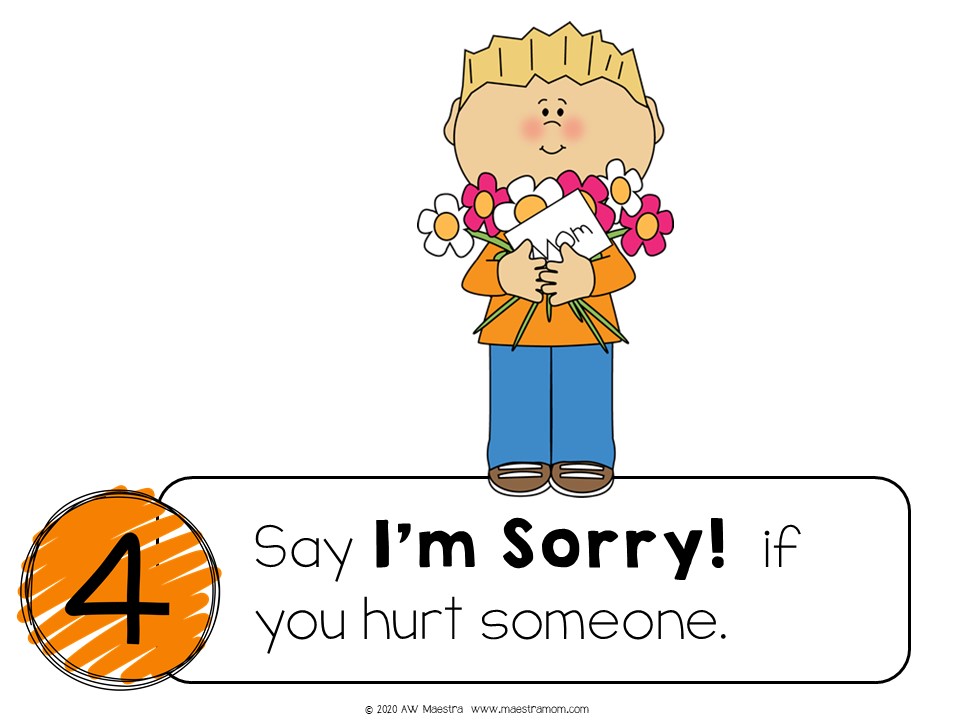
4. Say I’m sorry if you hurt someone.
Another part of being human is learning that we all unfortunately sometimes hurt others. With little children, this will most likely be in the form of hitting, pushing, or biting. Older children hurt with ugly words and mean tricks. Sometimes we hurt someone accidentally. Teach your child that taking ownership for our actions means noticing when you hurt someone and apologizing for your mistake.
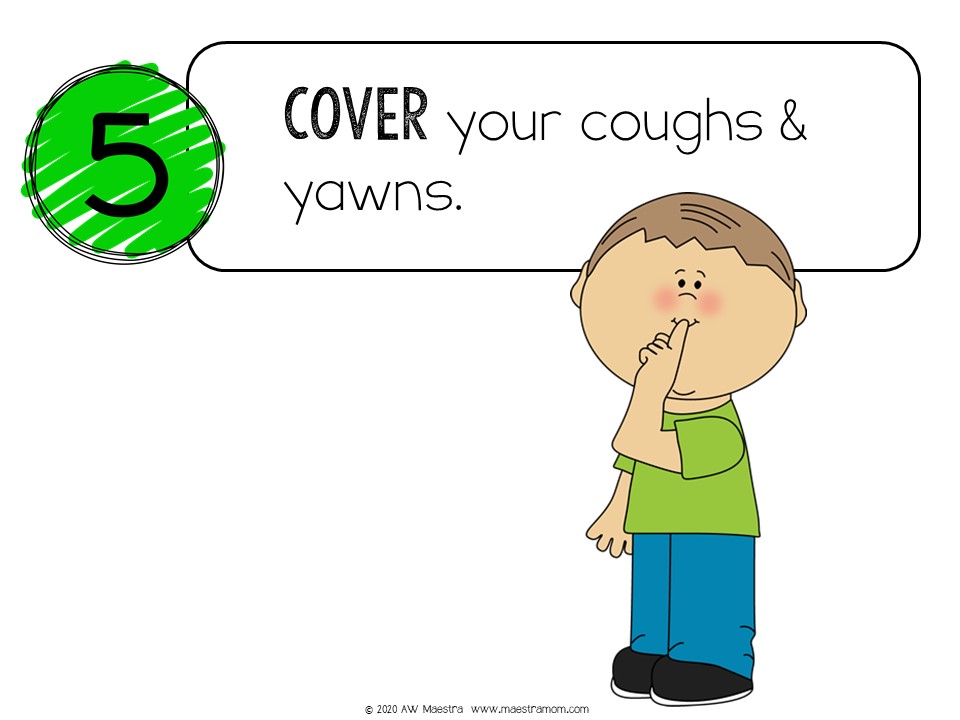
5. Cover your coughs and yawns.
This is basic, class good manners and the beginnings of personal hygiene! No one wants to peer down your throat or get your germs, so cover those coughs, sneezes, yawns, and oh! – My mother would add, “don’t talk with your mouth full!”
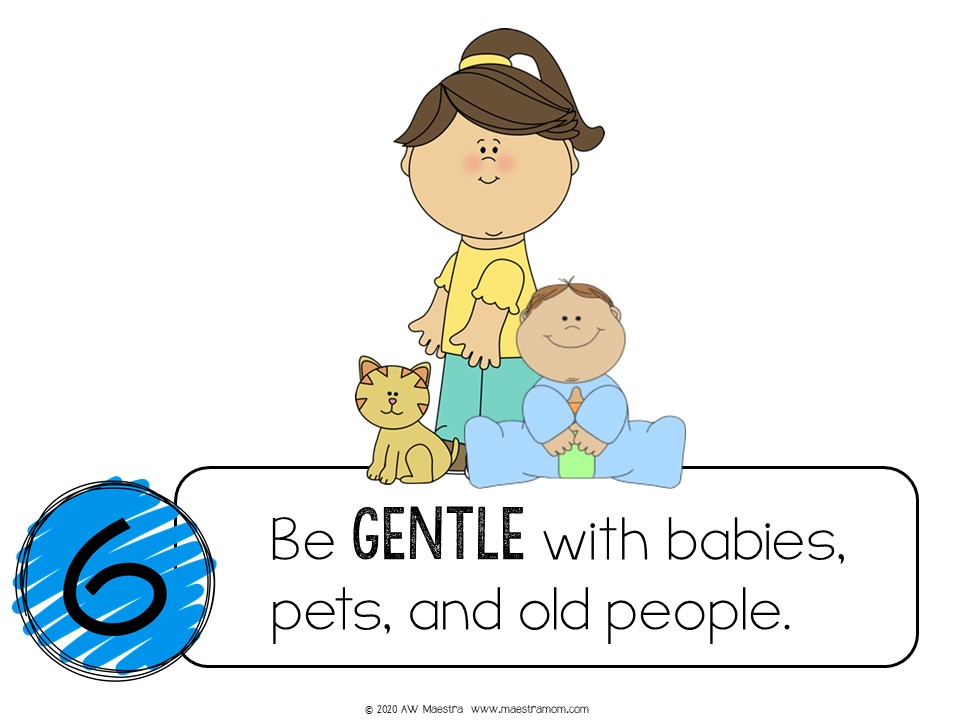
6. Be gentle with babies, pets, and old people.
Gentleness is one of the lost good manners, or so it seems to me. Most children are naturally rough and rambunctious. Model how to use a gentle 2-finger touch. Expose your children to the elderly and help them learn how to give gentle hugs. Gentleness is a virtue we want to nurture!
READ: 40 Traditions That Teach Faith to Our Kids
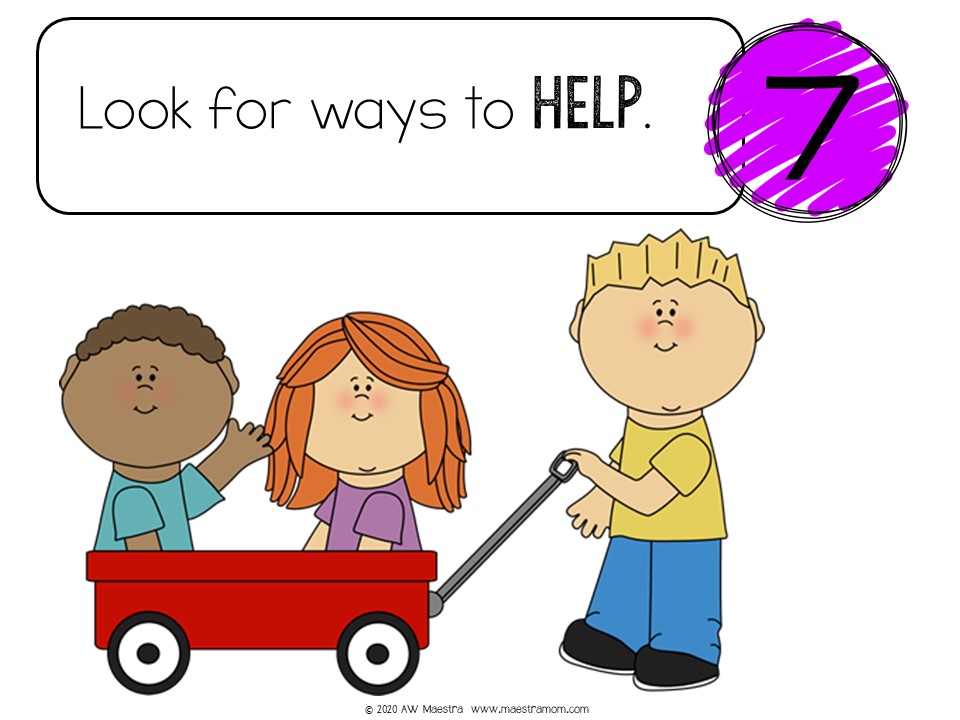
7. Look for ways to help.
Too many people today wait for others to serve them. Instead, teach your child to have a servant’s heart. How can you help Mommy or Daddy? How can you help sister, brother, or grandma? What can we do for our neighbors or our church family? Trash at the playground? We can pick it up. A woman at the store with her arms full of groceries? We can open the door!
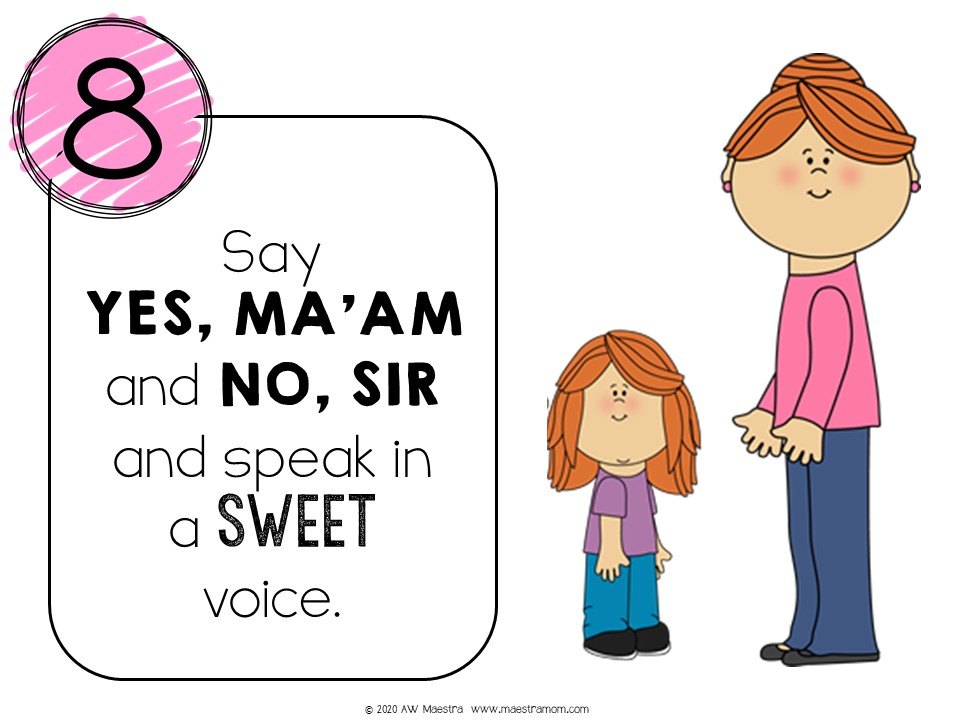
8. Say yes, ma’am and no, sir and speak in a sweet voice.
Respectful speech begins with learning to say a classic yes, ma’am and no, sir. These old-fashioned good manners are as vital today as ever. Say them to your child and soon he will begin saying them back to you. Don’t let her get by with sarcastic, grumpy, and ugly tones of voice! How you say it matters as much as what you say.

9. Thank people who have been kind.
Teach your child to say, “thank you” and be grateful for what others do. Invited to someone’s home? Say thank you when you leave. Received a gift? Write a thank you note. Someone open the door for you or gave you a turn? Smile and say thanks. Thankful kids make for happy kids because they notice the goodness in the world around them.
READ: A Mom’s Cry to God, “O Fill My Cup, Let it Overflow”
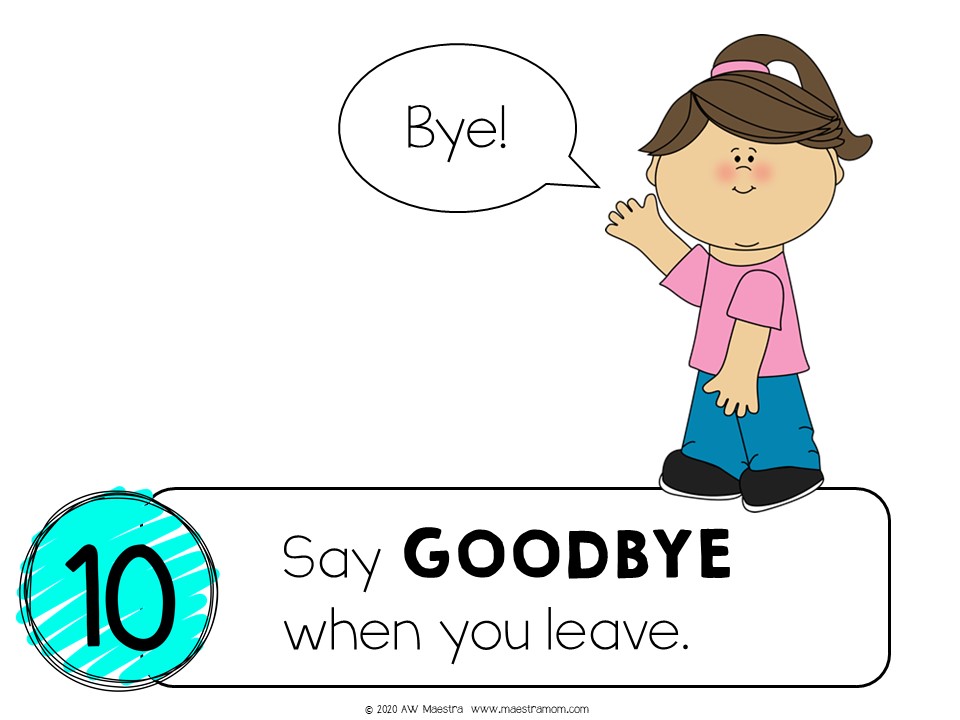
10. Say goodbye when you leave.
Remember how important it is to say hello when you first see someone? It is just as important to say goodbye when you leave, too. Don’t just disappear! This is your moment to make a connection and strengthen a relationship. Saying goodbye is a great opportunity to say thank you or simply show your appreciation to the other person. Let them know you’re looking forward to seeing them again soon!
Show perfect courtesy toward all people.
Titus 3:2
Why are good manners important?
We live in a world filled with rudeness, selfishness, and injustice. Manners matter. Good manners help us to look outward towards the needs of others. As the scriptures say, “Do nothing from selfish ambition or conceit, but in humility count others more significant than yourselves. Let each of you look not only to his own interests, but also to the interests of others.” (Phil. 2:3-4)
Good manners stem from a good heart who genuinely loves and respects our fellow human beings. But good manners must be taught. They won’t be learned in our cut-throat, egocentric world unless they are nurtured in the home. Wouldn’t our world be a kinder, more beautiful place if all of us demonstrated these 10 classic good manners?
Download & print your copy of Good Manners Posters & Mini-book
